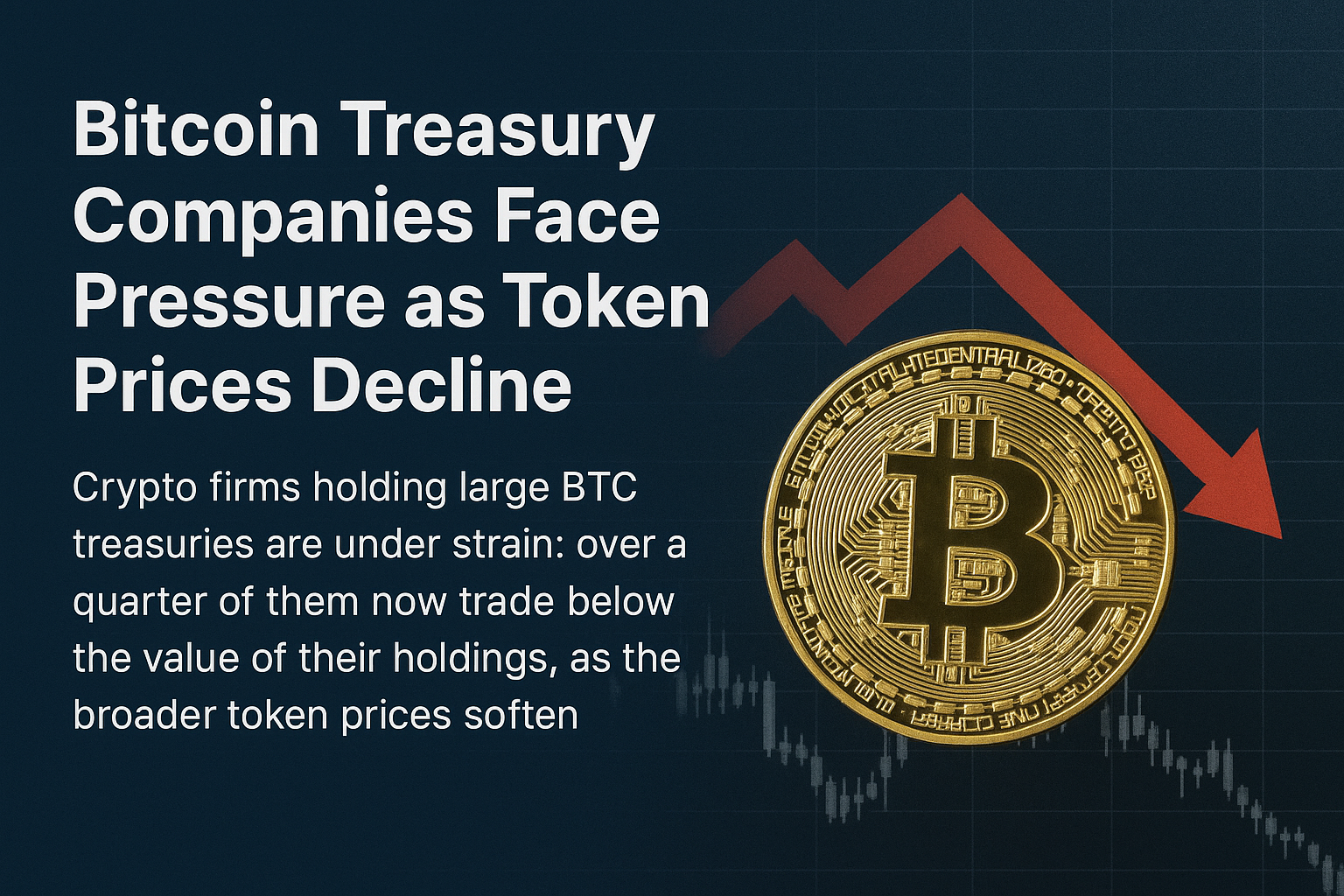As Bitcoin’s price retreats from its recent highs, a growing number of companies holding large BTC treasuries are feeling the squeeze. According to data from CoinCentral, more than a quarter of publicly traded firms with significant Bitcoin reserves are now valued below the market worth of their holdings. This unsettling trend raises questions about sustainability, strategy, and the evolving role of Bitcoin as a corporate asset.
The Double-Edged Sword of Bitcoin Treasuries
In the last few years, companies like MicroStrategy, Tesla, and several fintech and mining firms have integrated Bitcoin into their balance sheets, promoting it as a “digital gold” hedge against inflation and monetary debasement. The move was hailed as visionary during bull markets — but the current downturn is testing that conviction.
When token prices surge, the value of corporate treasuries inflates, boosting confidence and attracting investors. But when markets turn bearish, these same holdings can amplify financial risk. For smaller firms or those heavily exposed to Bitcoin, a 20–30% price drop can quickly translate into balance sheet strain, investor skepticism, and tighter liquidity conditions.
Market Valuations Below Holdings
CoinCentral’s data suggests that over one in four Bitcoin-holding companies are now trading at valuations lower than their BTC reserves — a sign that markets may be pricing in future selloffs, balance sheet stress, or lack of diversification.
This paradox highlights a critical point: even if Bitcoin’s long-term fundamentals remain strong, short-term volatility can create mismatches between asset value and investor perception. Companies that leveraged debt to accumulate Bitcoin, as MicroStrategy famously did, are particularly vulnerable to this kind of pressure.
The Investor Perspective
Institutional and retail investors alike are recalibrating how they view crypto-exposed equities. During bull runs, “Bitcoin proxy stocks” offer a way to gain exposure without directly buying crypto. But in downturns, these same stocks often suffer sharper drawdowns than Bitcoin itself, given their operational and leverage risks.
Analysts warn that the correlation between these equities and Bitcoin remains high — meaning diversification within the crypto sector provides limited downside protection. Investors are therefore demanding clearer strategies, better treasury management policies, and stronger communication from executives managing digital assets.
Strategic Adjustments Ahead
In response to the downturn, some companies are exploring strategic shifts:
-
Partial liquidation of holdings to strengthen cash reserves.
-
Hedging strategies using derivatives to protect against further declines.
-
Diversification into stablecoins or tokenized bonds to balance volatility.
-
Reframing Bitcoin exposure as part of a long-term innovation or infrastructure play, rather than a short-term profit driver.
The Long-Term Outlook
Despite the current pressure, most analysts agree that Bitcoin’s presence in corporate treasuries is here to stay. The asset’s scarcity, global liquidity, and resistance to debasement remain attractive for companies seeking to hedge against macroeconomic uncertainty.
However, this episode serves as a reminder that crypto assets — even Bitcoin — come with inherent volatility. Transparency, disciplined risk management, and realistic investor communication will be key to weathering the storm.
As the next cycle unfolds, firms that can strike the right balance between conviction and caution will likely emerge stronger — and set the template for how digital assets are managed in the corporate world.




